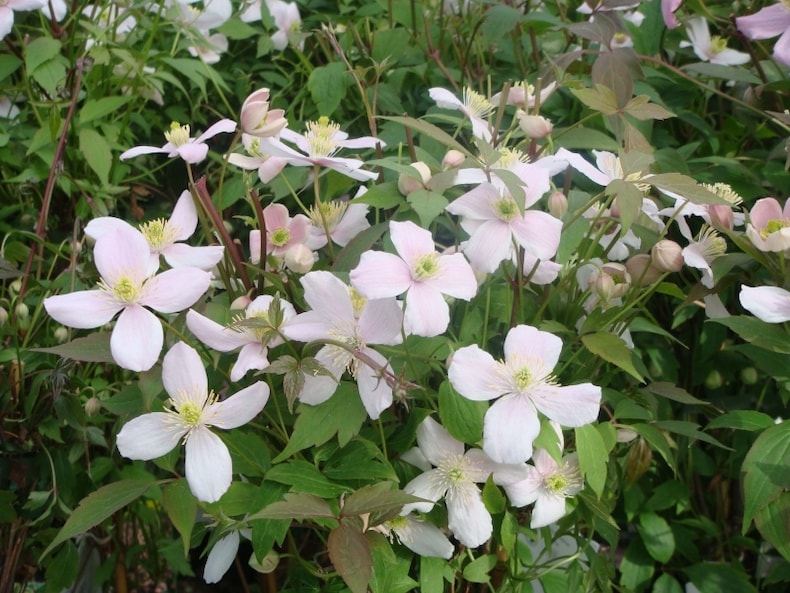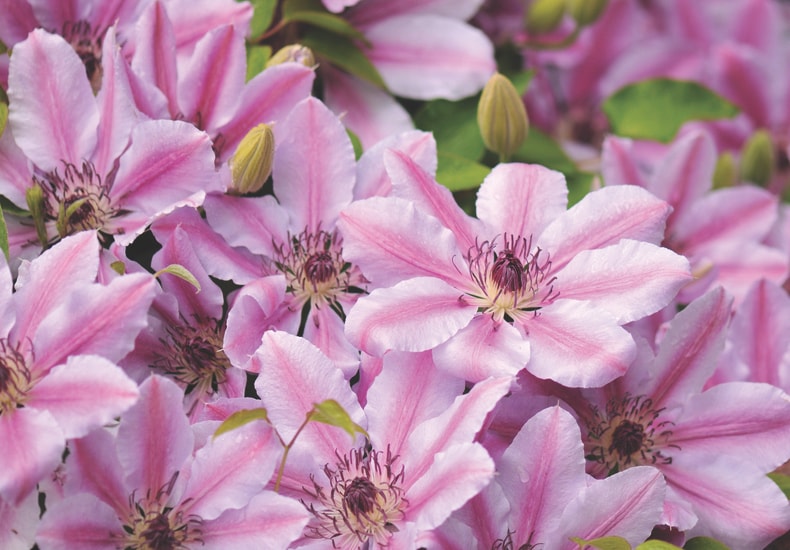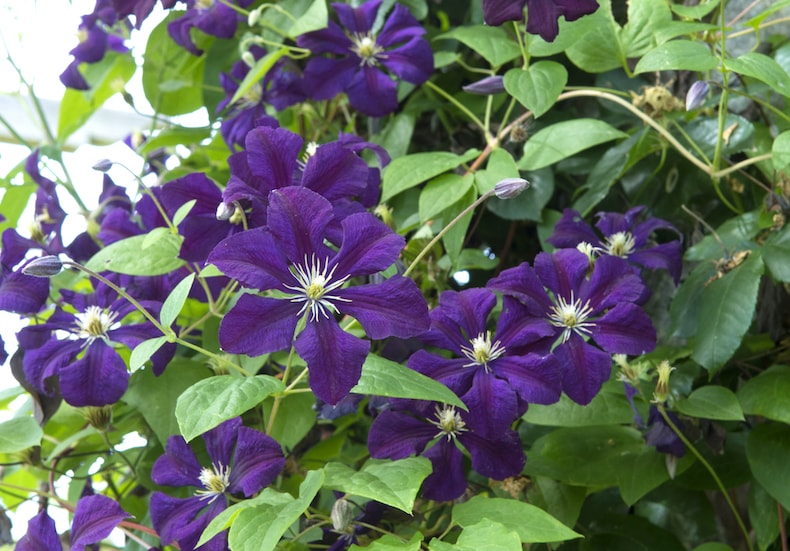
How to prune clematis
If you don’t prune your clematis, it’s likely to turn into a mass of tangled growth with flowers just at the top. And if you prune it at the wrong time, you might not get any flowers at all.
Pruning a clematis is very straightforward, providing you know when your clematis flowers. That’s because these popular garden plants fall into three basic pruning groups, based on when their flowers appear.
All new clematis plants should be pruned back to about 30cm in the first spring to encourage multiple strong stems. In subsequent years, prune your clematis according to which group it falls into. Here’s our easy pruning guide to help you get the most from your clematis.
When to prune group one clematis

Prune group 1 clematis after flowering to keep them within their allotted space
Image: Clematis montana 'Rubens' from Thompson & Morgan
Group one clematis are the spring performers and include Clematis montana and C. alpina. Plants in this group should be pruned only when they are too big for their space.
They flower on wood made the previous season so it’s important to give them time to grow after pruning to ensure flowering the next year.
Wait until the last flowers have faded and then tidy them up by cutting back to a healthy set of buds. Use sharp secateurs or loppers to give a clean cut.
Old plants can be rejuvenated by cutting stems almost to the ground but this is best done only as a last resort and should not be repeated for at least three years.
When to prune group two clematis

Group 2 clematis, like 'Nelly Moser', flower twice
Image: Clematis 'Nelly Moser' from Thompson & Morgan
Group two clematis produce their first flowers before June and have a second flush later. Popular varieties in this group include ‘Nelly Moser’ and 'General Sikorski'.
They produce their first flowers on old wood so should be pruned lightly at the end of February or early March. Don’t prune them hard or you will lose the early flowering shoots.
Remove any dead or weak growth and cut any other stems to the top pair of strong buds, tracing down from the top of the stem.
This group has a second flush of flowers on this season’s wood, and should be pruned again after the first flowering to encourage new growth. Do this by shortening the stems under the spent flowers to a strong bud or shoot.
If older plants have become bare at the base, they can be cut back to about 30cm after the first flowering to encourage new, stronger growth. It means sacrificing the second flush of blooms, but it will rejuvenate the plant.
When to prune group three clematis

Group 3 clematis flower later in the summer, from July-September
Image: Clematis 'Etoile Violette' from Thompson & Morgan
Group three clematis flower later in the summer, after mid-June, and include viticella varieties. They flower on new wood so last year’s growth should be removed in early March.
Maintenance couldn't be easier - simply cut your plant back to about 25-30cm above ground level each March, close to the lowest set of good buds.
Step-by-step video guide to pruning clematis
We hope you're now feeling much more confident about pruning your climber! Want to learn more about clematis? Visit our hub page - a dedicated resource which groups together everything you need to know about growing and caring for this popular climbing plant.
See all pruning guides
Individual guides
Flower & Shrubs
- Pruning Buddleja
- Pruning Camellias
- Pruning Fuchsias
- Pruning Hydrangeas
- Pruning Hypercium - St Johns Wort
- Pruning Lavender
- Pruning Magnolias
- Pruning Passion Flowers
- Pruning Rhododendron
- Pruning Ribes Sanguineum
- Pruning Rosemary
- Pruning Roses
- Pruning Tree Peonies
- Pruning Wisteria
- Pruning Asparagus
- Pruning Blueberries
- Pruning Goji Berries
- Pruning Honeyberries
- Pruning Raspberries
- Pruning Apple trees
- Pruning Box and Yew trees
- Pruning Catalpa trees
- Pruning Christmas trees
- Pruning Olive trees
- Pruning Patio Fruit trees
- Pruning Pear trees
- Pruning Plum trees
Fruit & Veg
Trees

Written by: Mandy Bradshaw, the Chatty Gardener
Cotswold-based Garden Media Guild member, Mandy Bradshaw, is also known as the Chatty Gardener. Passionate about gardening and writing, her beginnings are in football reporting for her primary school, and Mesembryanthemum planting with her mother. Winner of the 2018 Property Press Awards 'Garden Journalist of the Year', she writes for not only her own blog but also a range of newspapers, magazines and other gardening and non-gardening sites.Banner image: Peter Turner Photography/ Shutterstock
Sign Up For Exclusive Special Offers




© 2025 Thompson & Morgan. All rights reserved. A division of Branded Garden Products Limited.



